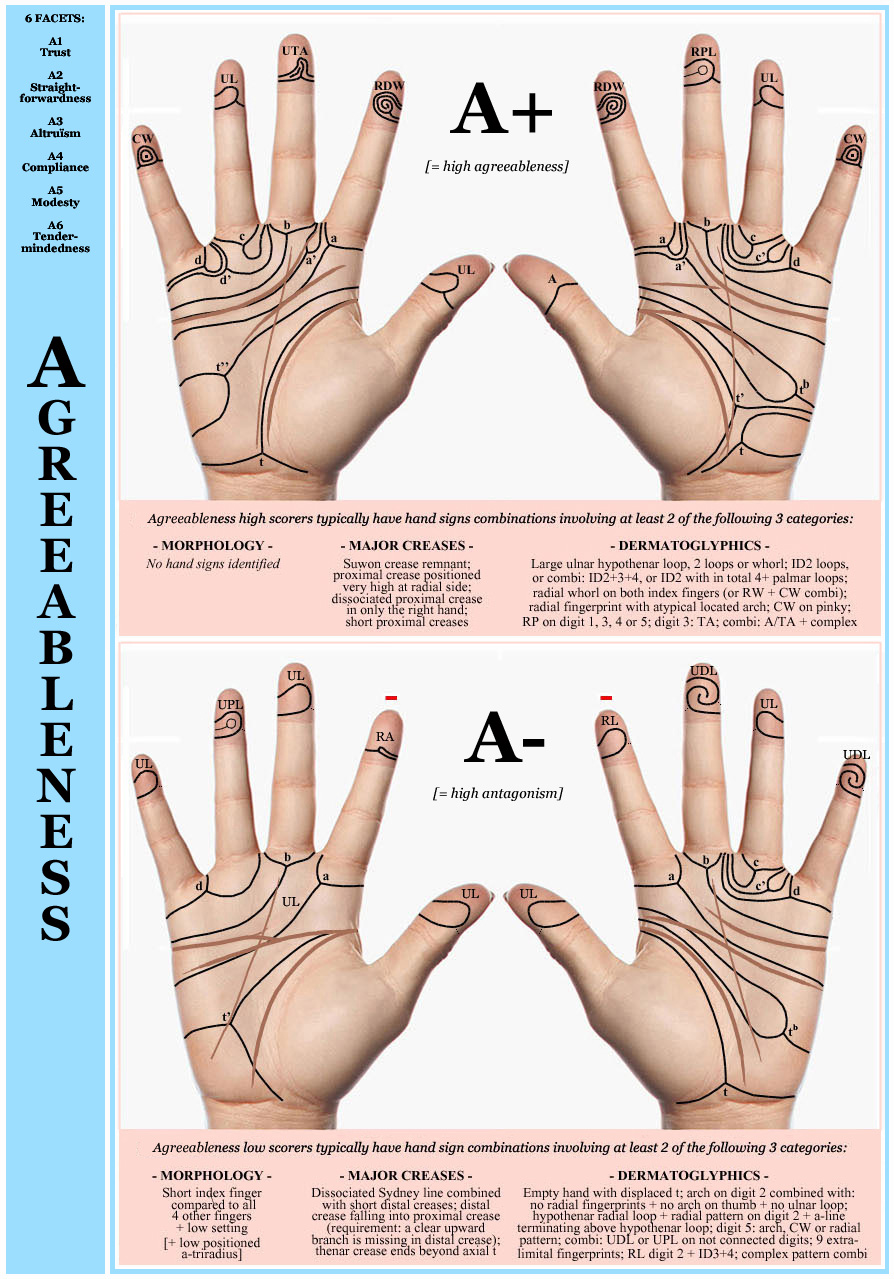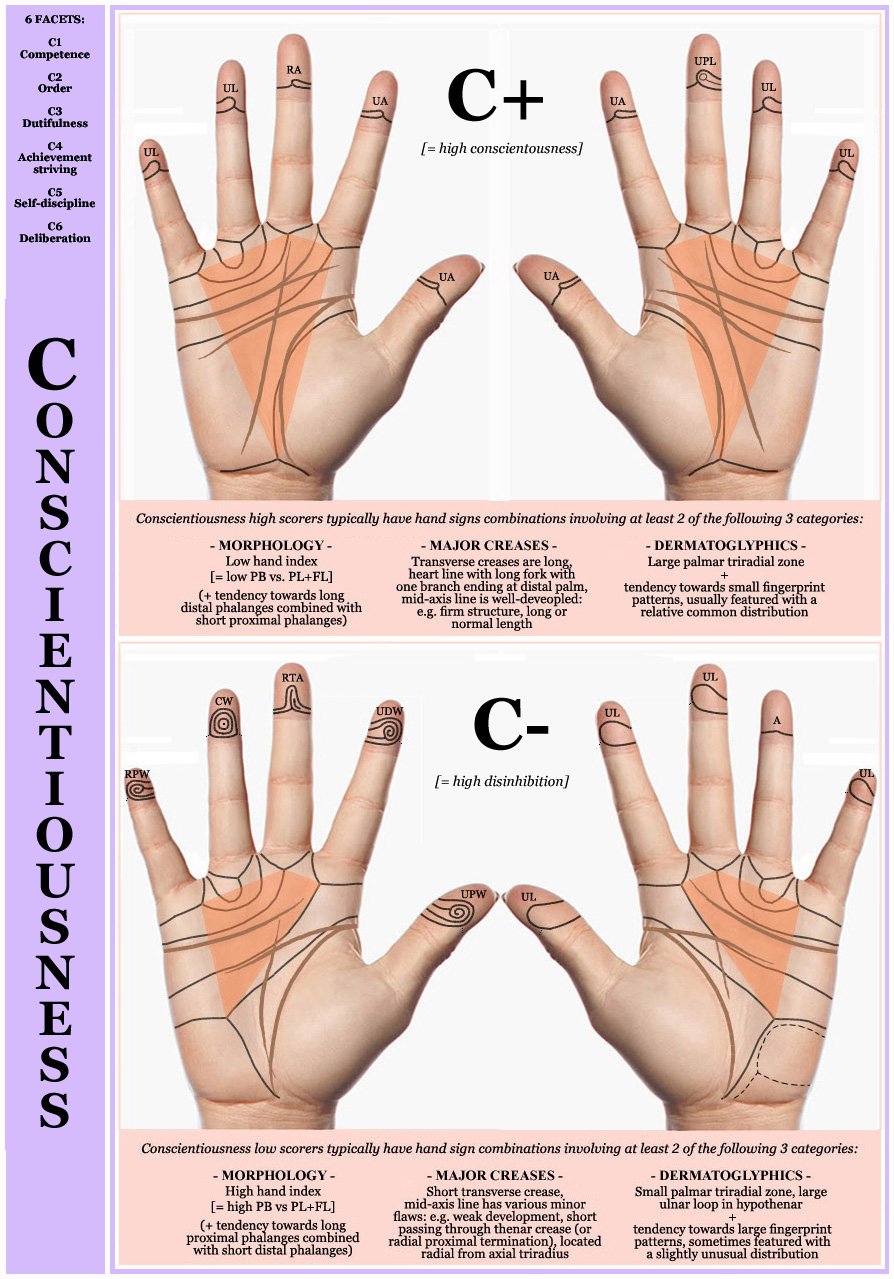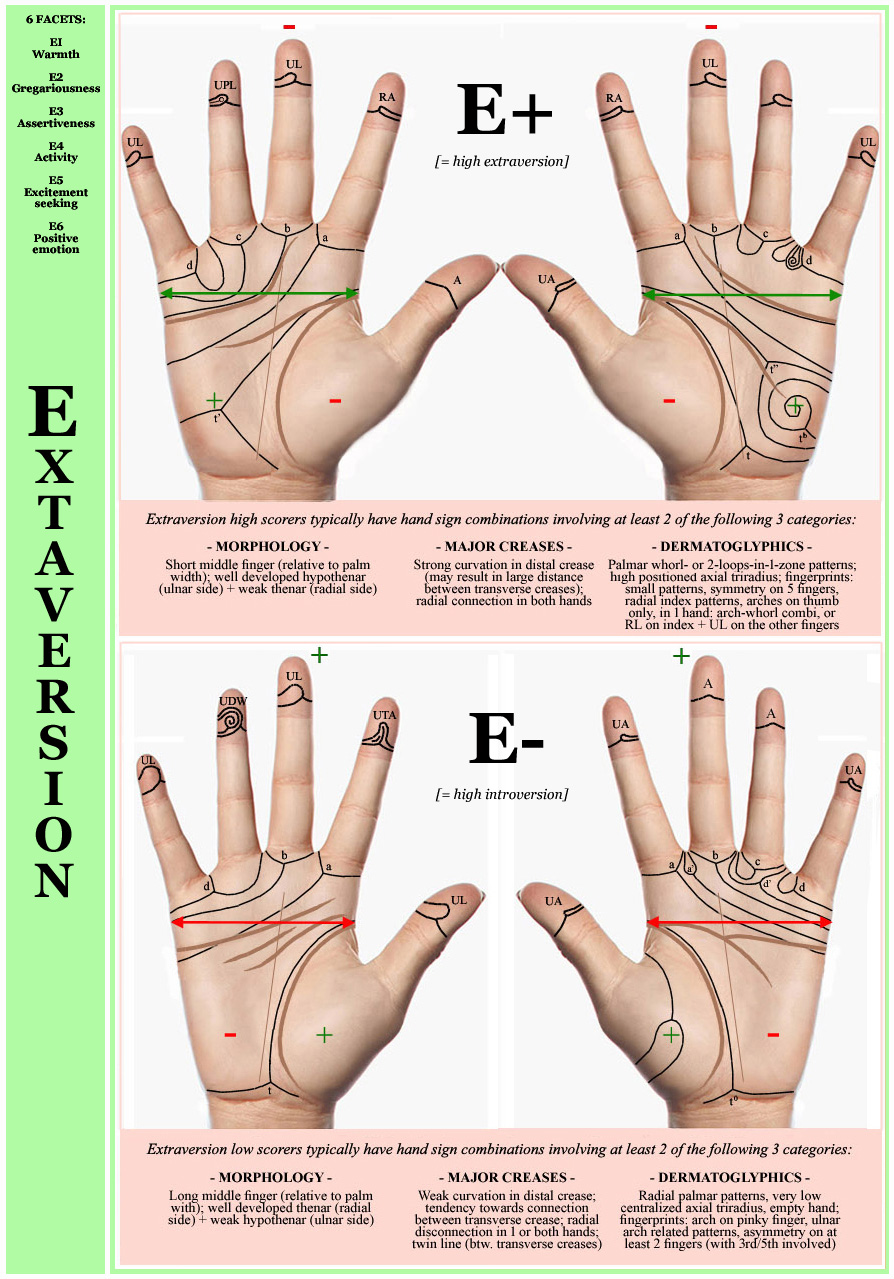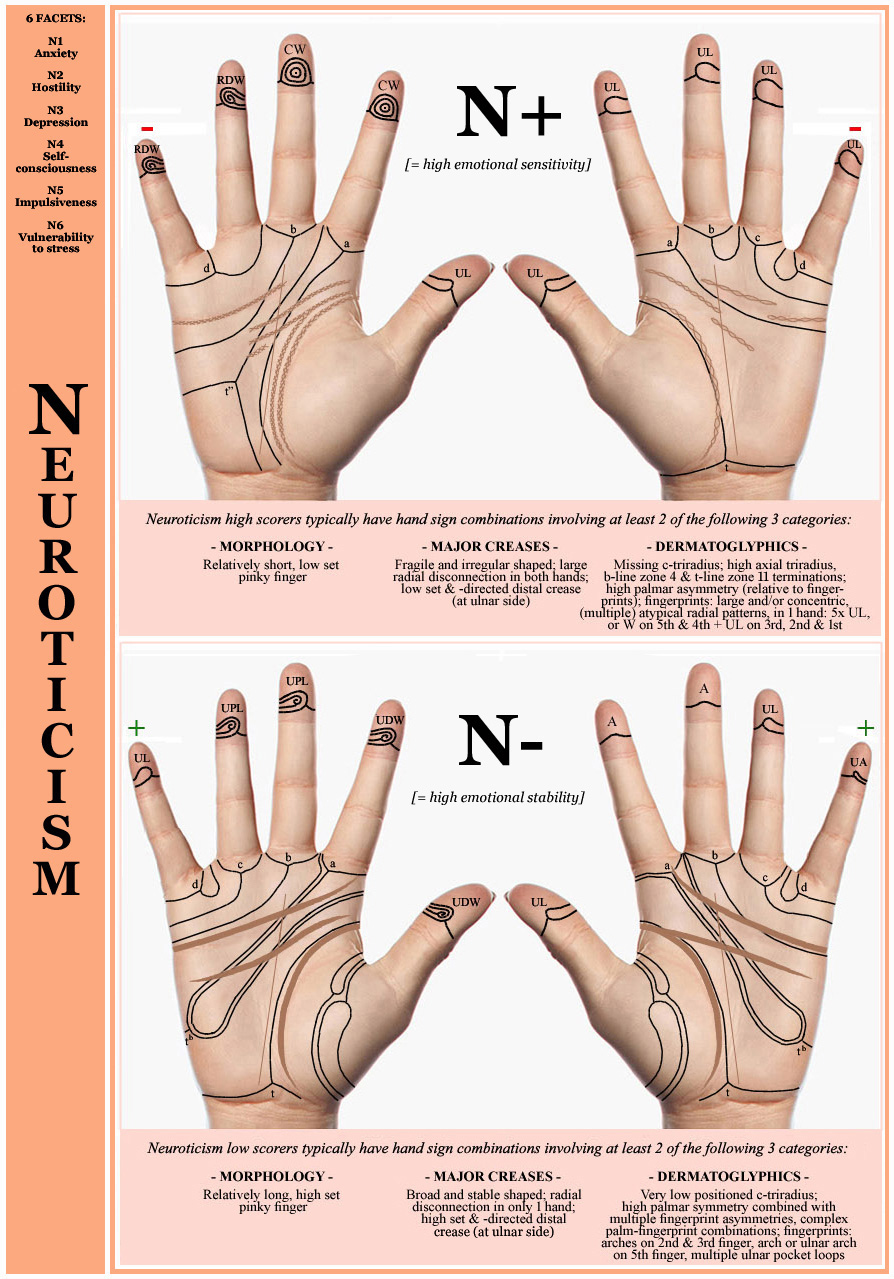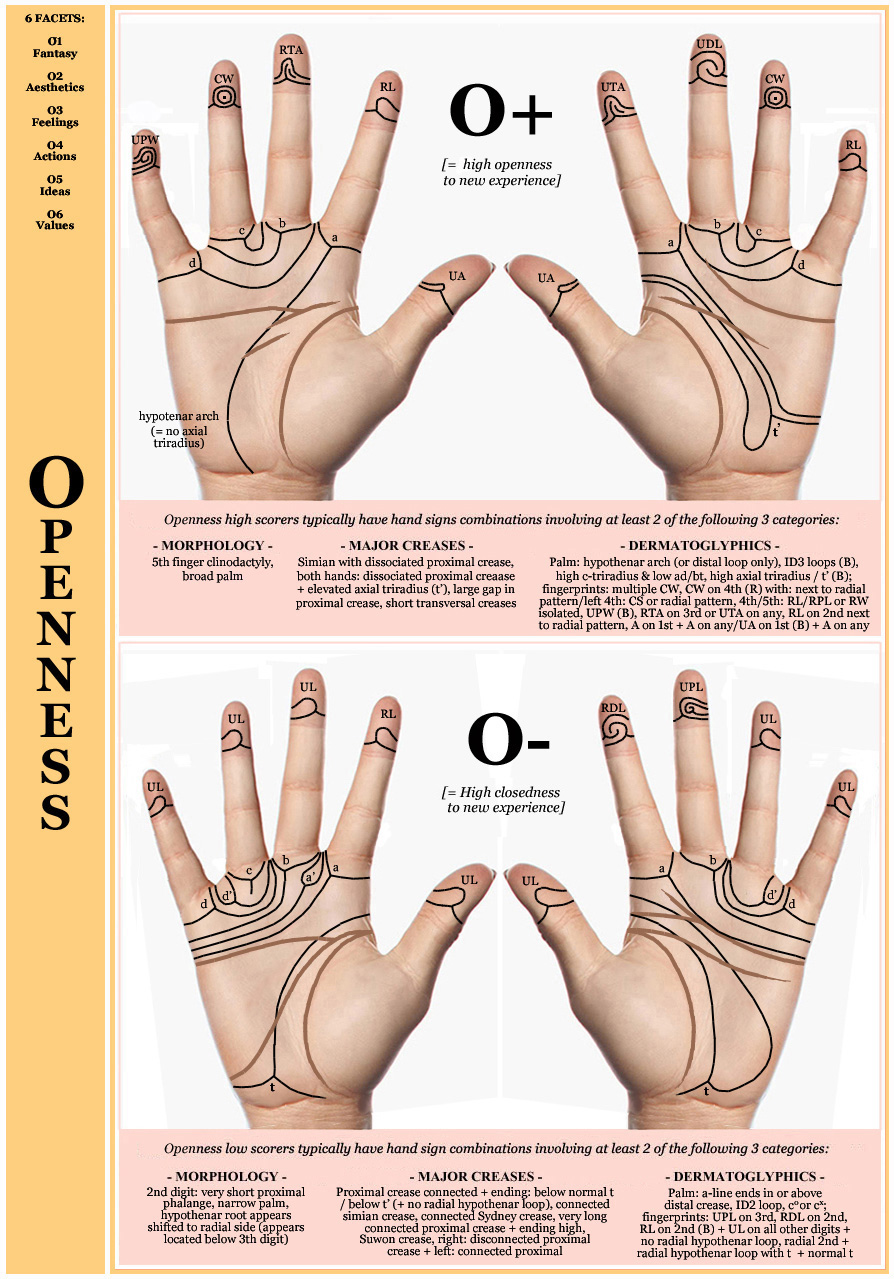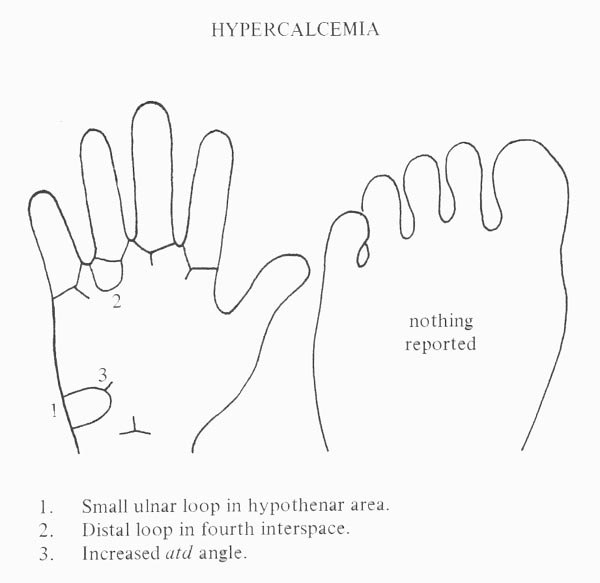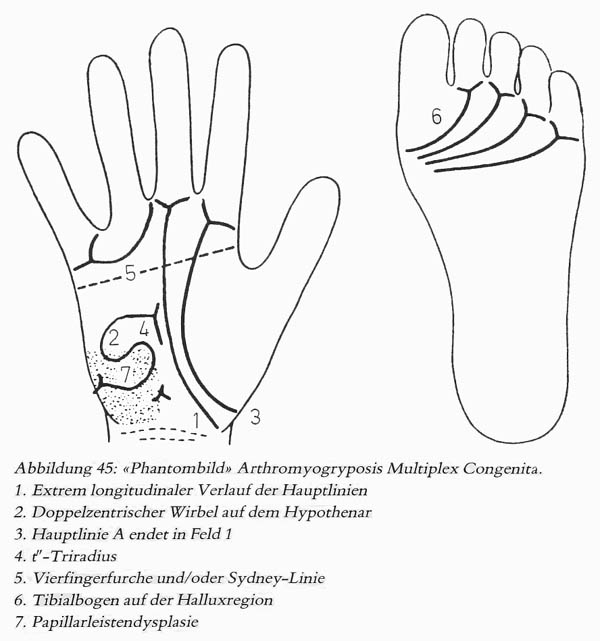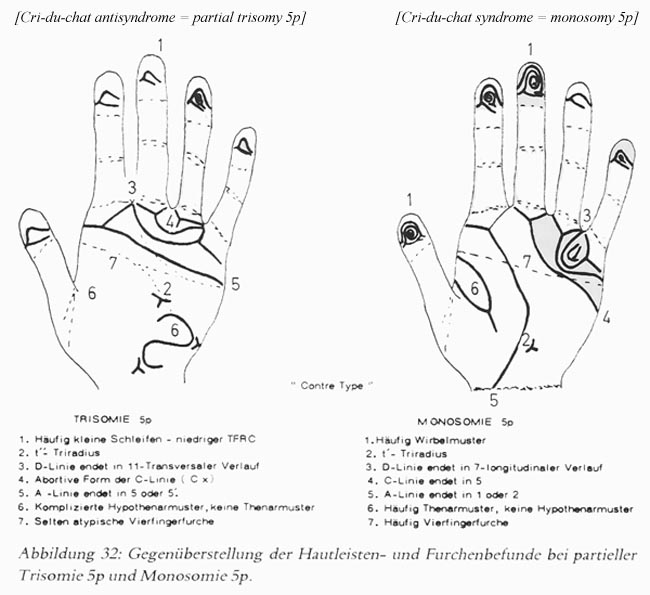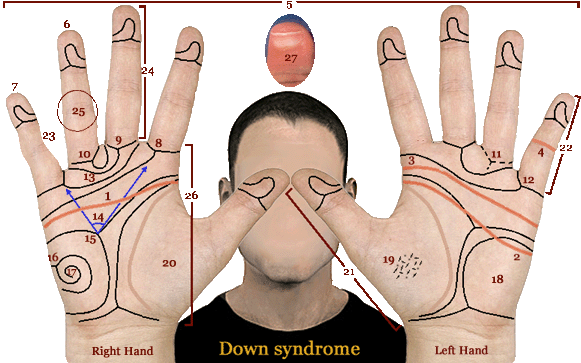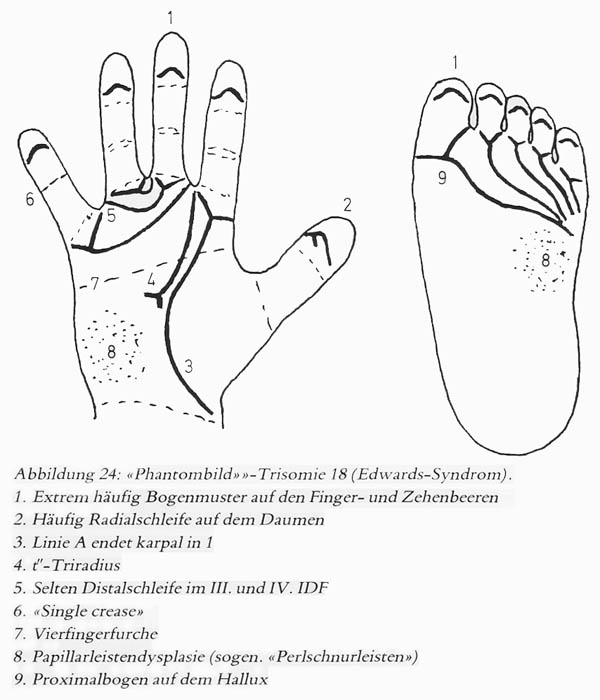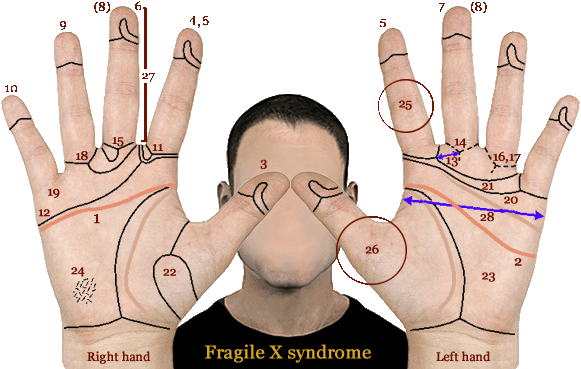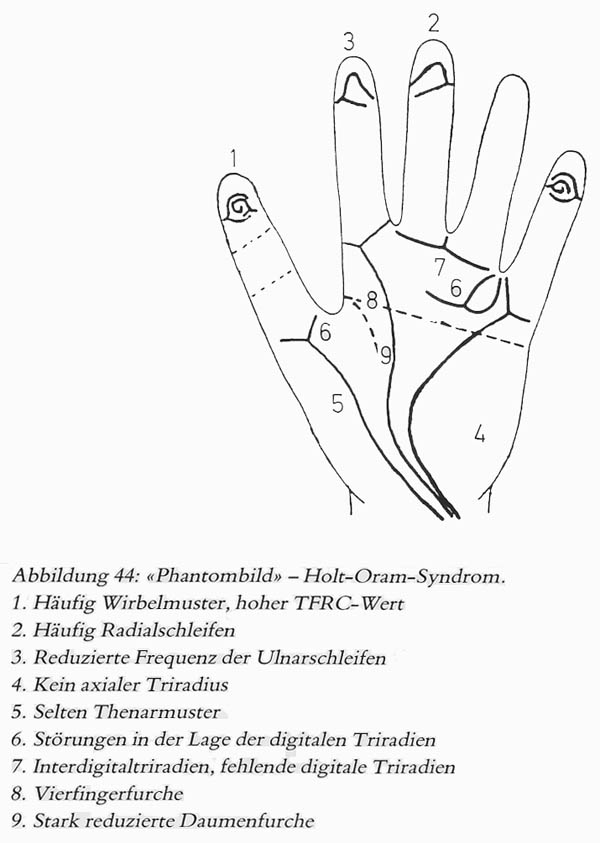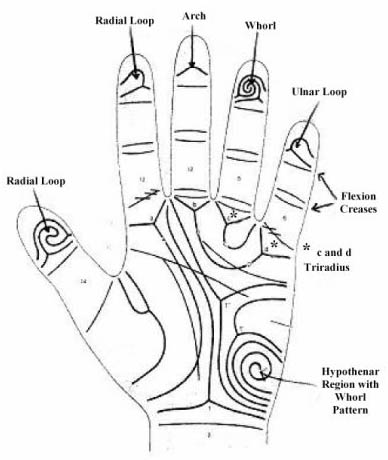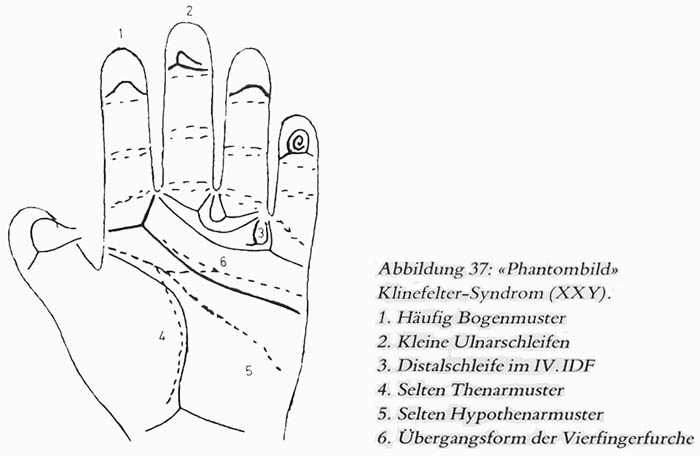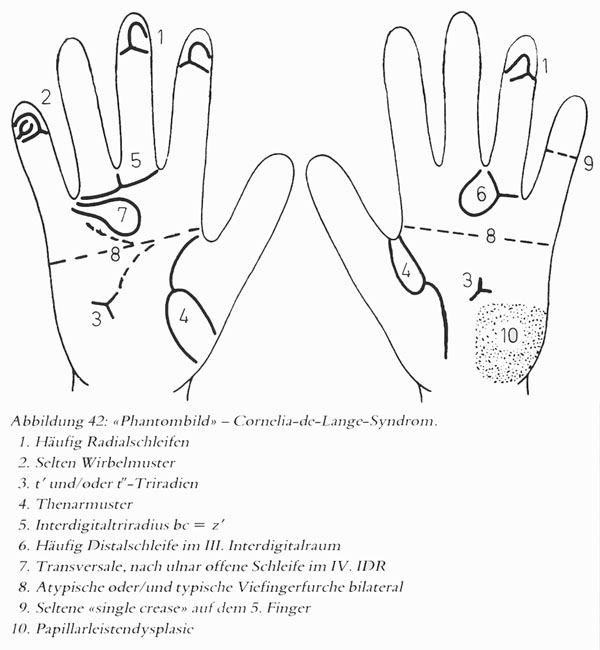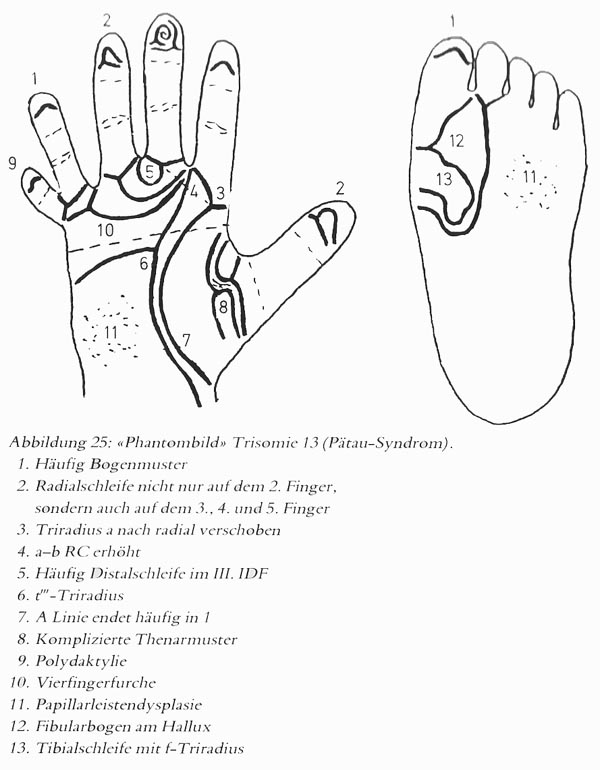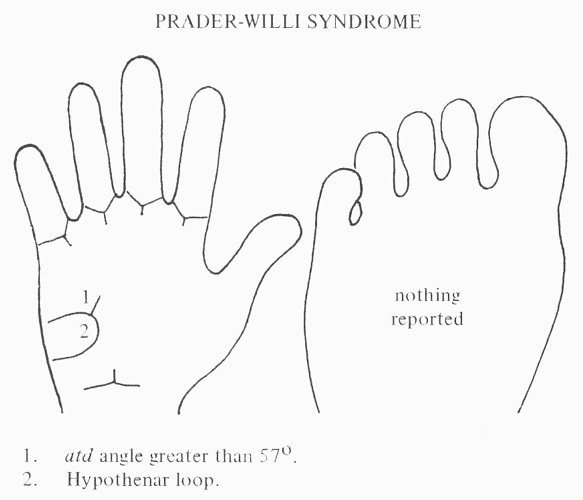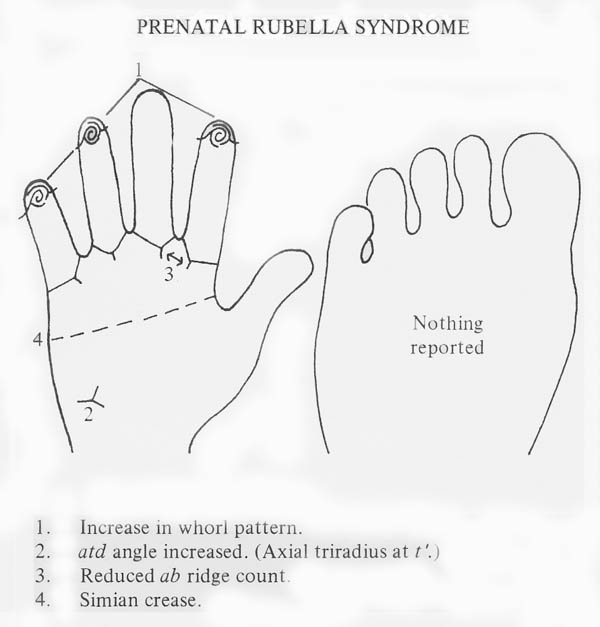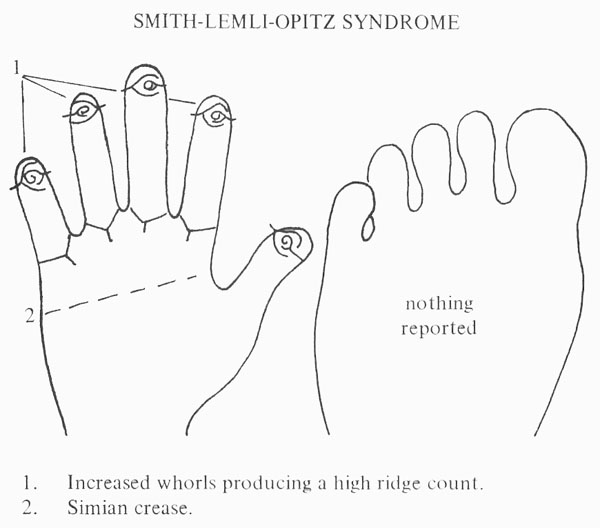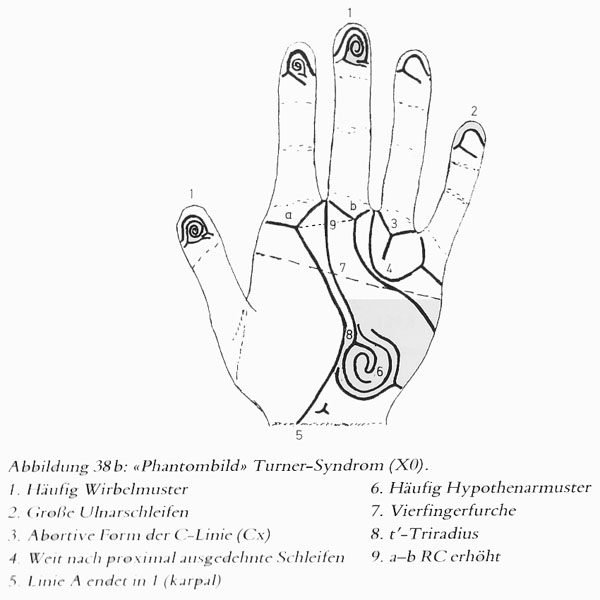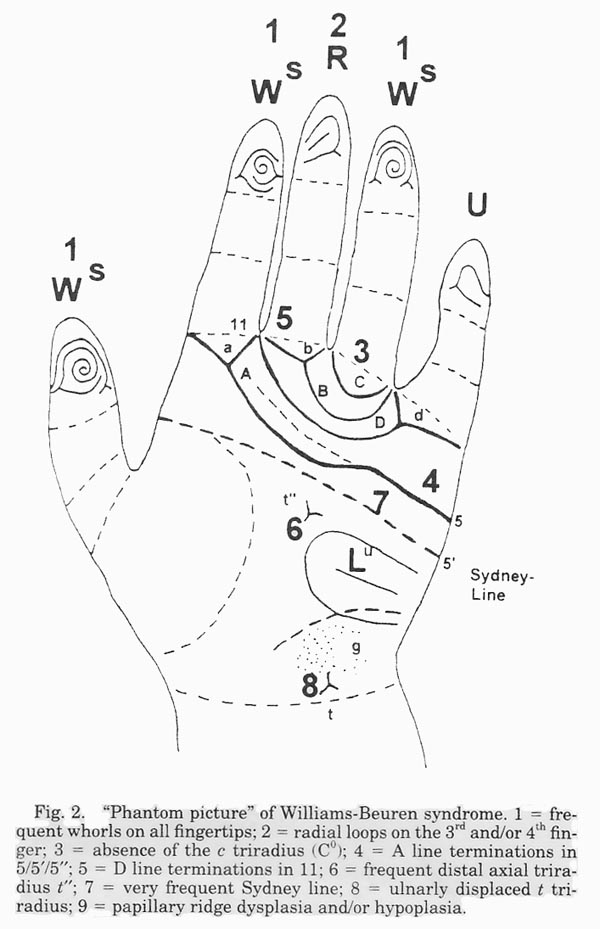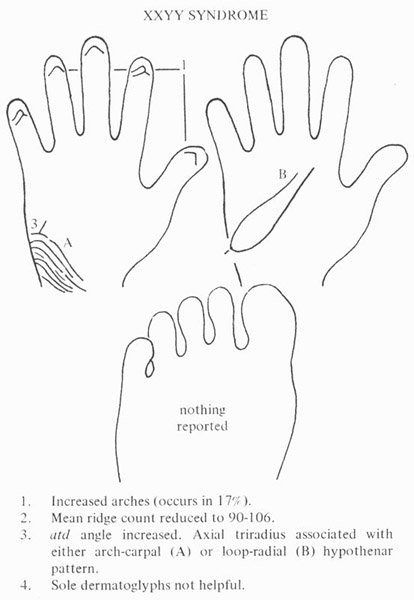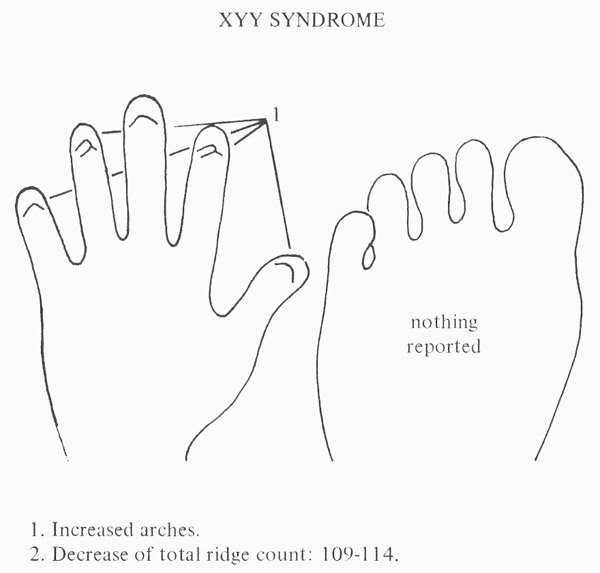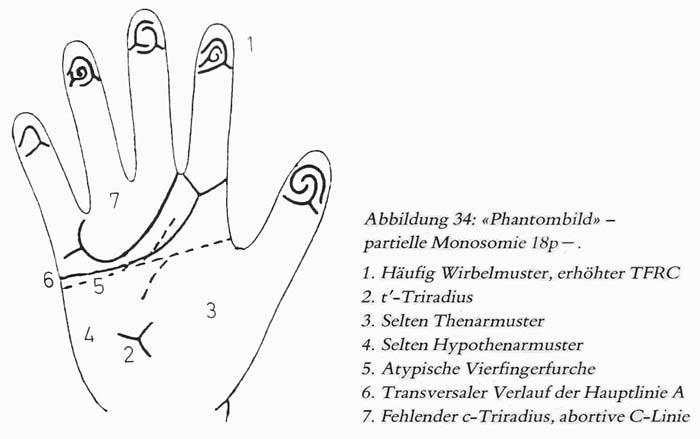
Scientific Hand Charts Collection:
Wolf-Hirschhorn syndrome!
1 Hand Chart for Wolf-Hirschhorn syndrome!
Wolf-Hirschhorn syndrome (WHS), a.k.a. 4p deletion syndrome (4p-), is a developmental disorder characterized by typical craniofacial features, prenatal and postnatal growth impairment, intellectual disability, severe delayed psychomotor development, seizures, and hypotonia.
Prevalence: Present roughly one in 50,000 births.
One hand charts is available for Wolf-Hirschhorn syndrome describing the significance of various typical dermatoglyphics, often combined with a simian line - see picture below.
NOTICE: Individual hand features described below should not get associated in isolation with any theme; only combinations involving multiple hand levels have potential for diagnostic purposes.
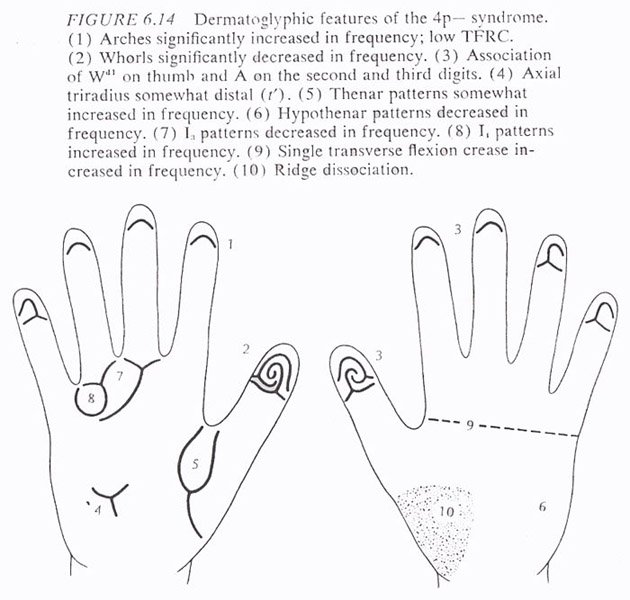
Dermatoglyphics in Medical Disorders (1976), p.189;
authors: B. Schaumann & M. Alter
Other significant hand signs (not reported inside the hand charts):
Typical hand behaviors associated with Wolf-Hirschhorn syndrome are: hand flapping, hand washing, holding the hands in front of the face (source: H. Chen et al., 2015).
Small hands are often seen in Wolf-Hirschhorn syndrome (source: NORD).
Small nails, short nails, narrow nails & flat nails [hypoplastic nails] have also been reported for Wolf-Hirschhorn syndrome in various articles.
Clinodactyly (curved-in pinky fingers) is recognized as a common feature in Wolf-Hirschhorn syndrome; in a small study a prevalence of 20% has been reported (source: A. Battaglia et al., 1999).
Other typical finger features are: low-set thumbs, tapered fingers with narrow pink tips (source: W.R. Centerwall et al., 1975). And finger-like appearance of the thumb, and thin fingers with bilateral overriding of the second finger onto the third (source: A. Battaglia et al., 1999).
Ectrodactyly [split hand/cleft hand] is a feature that is seen in a small minority of Wolf-Hirschhorn syndrome cases; prevalence appears close to 2% (source: A.L Shanske et al., 2009).
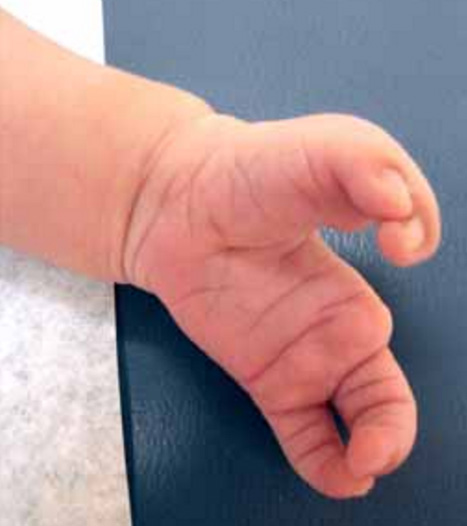
All significant hand signs listed above for Wolf-Hirschhorn syndrome together cover 6 out of the nine perspectives of the hand as defined according Multi-Perspective Hand Reading (including hand level 1, 3, 5, 7, 8 & 9).
A summary of the most significant hand sign combinations in Wolf-Hirschhorn syndrome is described here:
Decoding the language of the hand:
hand sign combinations in Wolf-Hirschhorn syndrome!
Hand charts are available for many other diagnostic issues;
start browsing HERE
![]() SCIENTIFIC HAND CHARTS: Introduction
SCIENTIFIC HAND CHARTS: Introduction
Hand charts for Big Five personality dimensions:
• Hand chart(s) for Agreeableness (2x: 1 in 4 people)
• Hand chart(s) for Conscientiousness (2x: 1 in 4 people)
• Hand chart(s) for Extraversion (2x: 1 in 4 people)
• Hand chart(s) Neuroticism (2x: 1 in 4 people)
• Hand chart(s) Openness (2x: 1 in 4 people)
Hand charts for diseases:
• Hand charts for hypercalcemia (1 in 4,000 people)
Hand charts for syndromes:
• Hand charts for arthrogryposis (1 in 10,000 people)
• Hand charts for cri-du-chat syndrome (1 in 30,000 people)
• Hand charts for Down syndrome (1 in 700 live births)
• Hand charts for Edwards syndrome (1 in 6,000 live births)
• Hand charts for fetal alcolhol syndrome (1 in 500 people)
• Hand charts for fragile-X syndrome (1 in 5,000 people)
• Hand charts for Holt-Oram syndrome (1 in 100,000 live b.)
• Hand charts for Kabuki syndrome (1 in 32,000 people)
• Hand charts for Klinefelter syndrome (1 in 1000 males)
• Hand charts for de Lange syndrome (1 in 15,000 live births)
• Hand charts for Marfan syndrome (1 in 5,000 people)
• Hand charts for Patau syndrome (1 in 15,000 live births)
• Hand charts for Prader-Willi syndrome (1 in 15,000 births)
• Hand charts for Rubella syndrome (1 in 100,000 people)
• Hand charts for Rubinstein syndrome (1 in 200,000 births)
• Hand charts for SLOS (1 in 40,000 births)
• Hand charts for Turner syndrome (1 in 2,000 female births)
• Hand charts for Warkany syndrome (1 in 200,000 births)
• Hand charts for Williams syndrome (1 in 14,000 births)
• Hand charts for Wolf-Hirschhorn syndrome (1 in 50,000 b.)
• Hand charts for XXYY syndrome (1 in 30,000 male births)
• Hand charts for XYY syndrome (1 in 1,000 male births)
• Hand charts for 18 deletion syndromes (2 in 40,000 live b.)
NOTICE: Reflexology hand charts are not included in this section because the scientific foundation of any of such charts is actually unknown; nevertheless, you can read more about the fundamentals of such charts HERE.
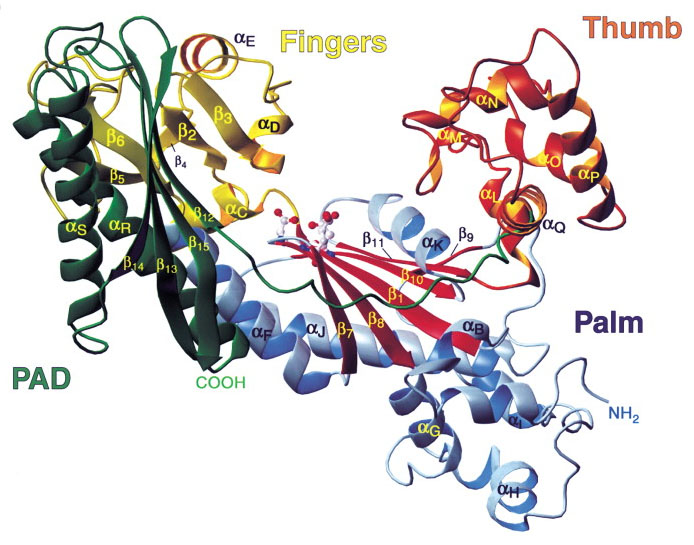
Other charts & maps:
• Fingerprints world map
• Hand reading experts world map
• Hand reflexology charts
